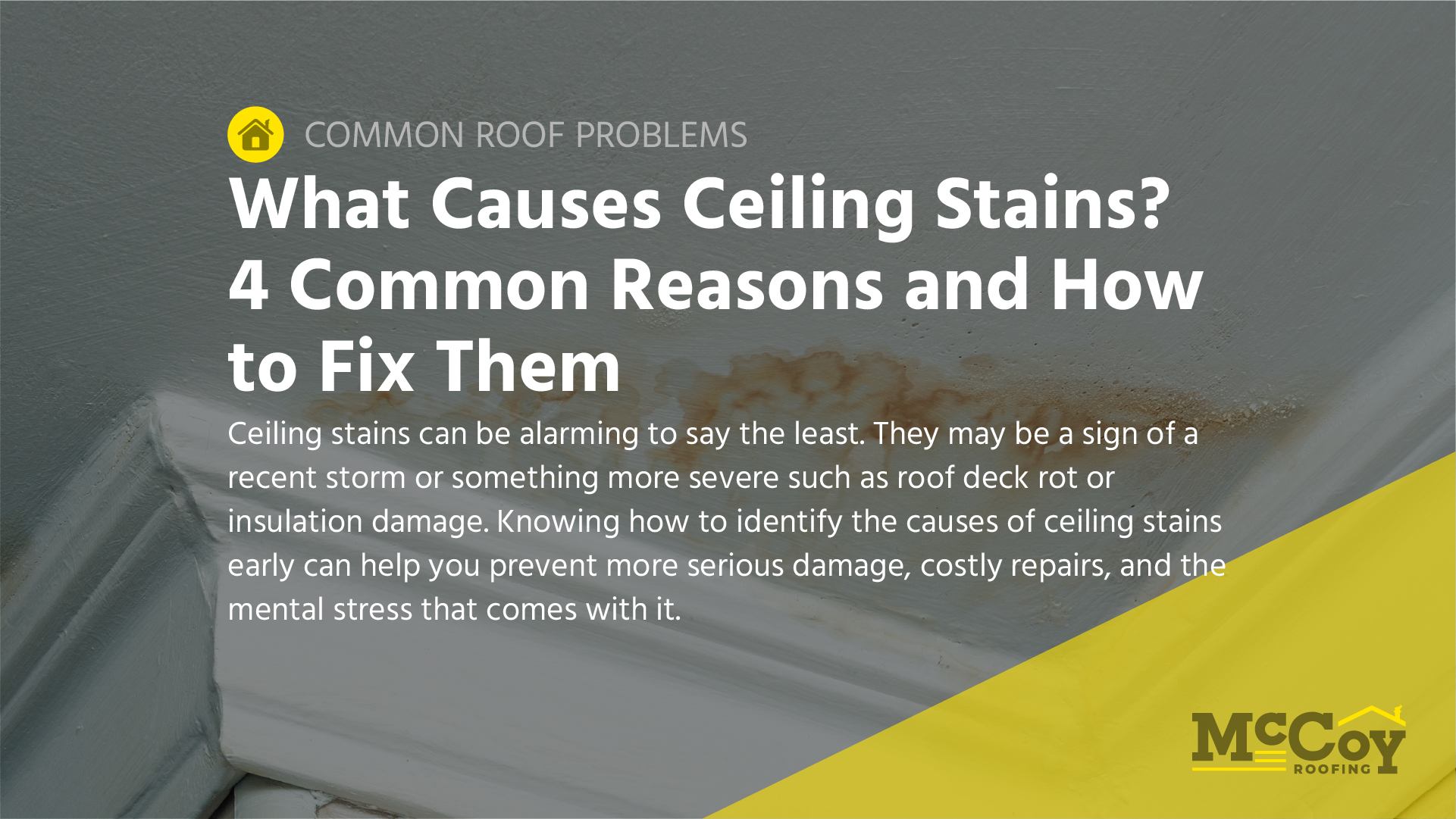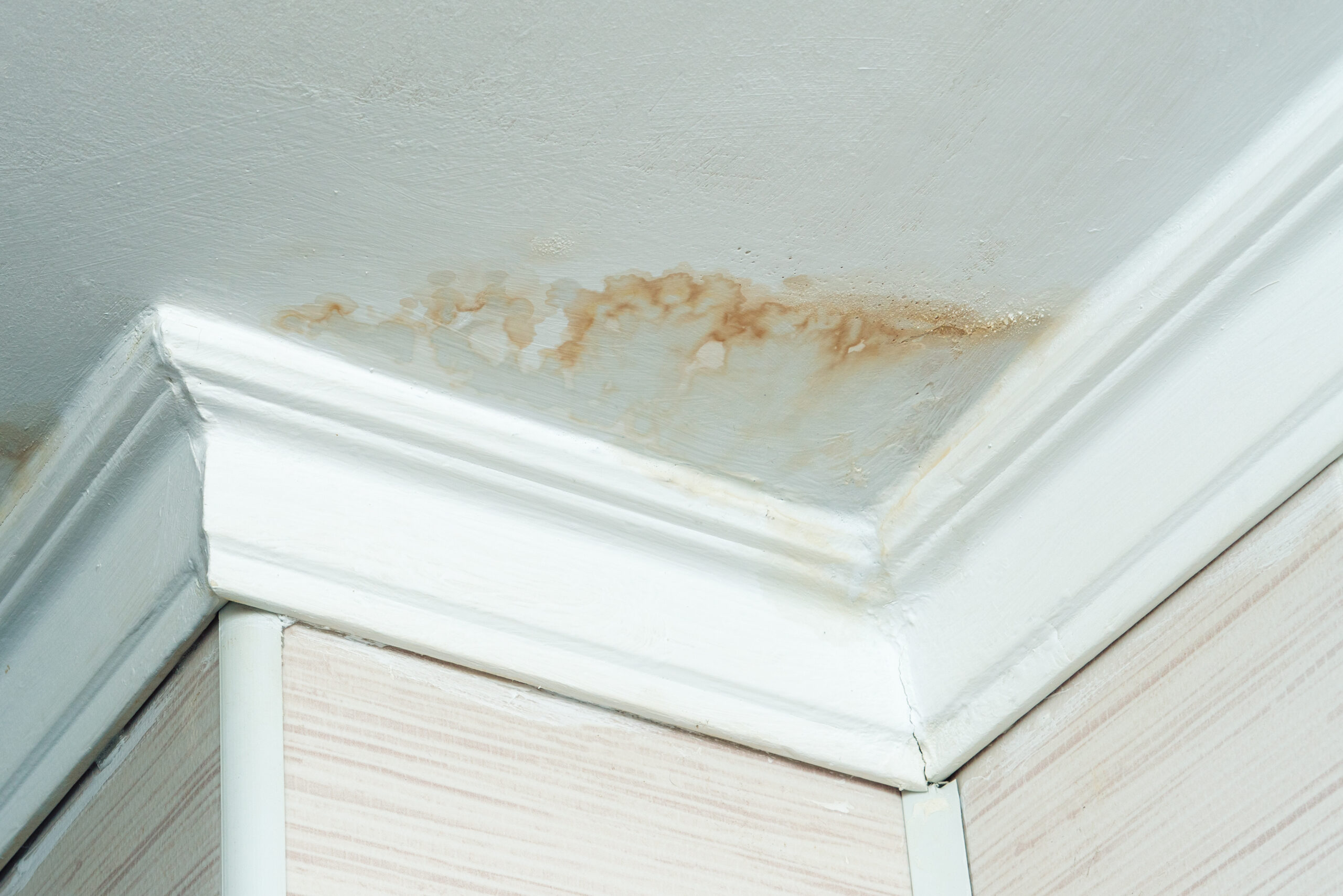

How to deal with a stained ceiling.
Ceiling stains can be alarming to say the least. They may be a sign of a recent storm or something more severe such as roof deck rot or insulation damage. Knowing how to identify the causes of ceiling stains early can help you prevent more serious damage, costly repairs, and the mental stress that comes with it.
In this article, McCoy Roofing Operations Manager Paul Browne will be your guide to four major causes of roof leaks and ceiling stains, then provide steps to take to address ceiling stains.

Why is my ceiling stained?
While there are many specific reasons you may find leaks or stains on your ceiling, Paul explains that in most cases it comes down to four issues:
- A leak around a roof penetration.
- Wind-driven rain or snow.
- An incorrect installation of exhaust vents.
- Condensation buildup in the attic space.
1. How to address a roof penetration leak
One of the simplest common causes of ceiling stains is a penetration in the roof. These are any features that require an intentional hole cut into the roof and decking and require proper sealing and flashing to prevent leaks.
“A leak usually happens around a penetration in the roof, such as a vent or a pipe,” explains Paul. “This is usually a relatively quick fix needing extra sealant to be applied.”
2. Wind-driven rain or snow
Another recurring problem typical to the Midwest is wind-driven rain or snow.
“This is when the force of the wind blowing at a certain angle blows rain or snow into a roof vent at such force that it can make its way into the attic space,” says Paul. Such occurrences are typically one-off events, though repeated instances may require addressing.
“There are add-ons available for the vents to help protect against this,” Paul says. “Or we recommend changing the vent style to better accommodate recurring winds.”
3. Incorrect exhaust vent installation
When exhaust vents are installed incorrectly, they can cause a recirculation of moist air.
“If two exhaust vents are installed closely together at different heights, the lower of the two vents will begin to operate as an intake vent, sucking air in,” Paul explains. Along with moisture, it can also pull in rain or snow, causing further water build up in the attic space.
“The fix is to mount exhaust vents at equal heights, or in the case of space restraints, different vent styles can be used to get the correct airflow balance.”
4. Condensation buildup in the attic space.
“Condensation buildup happens when the attic space has a high moisture content and is unable to expel it,” says Paul. This moisture accumulation grows on the underside of the deck and can eventually drip from nail heads or run along trusses until it causes stains on the ceiling.
Fixing condensation buildup requires ensuring proper airflow so that exhaust and intake vents can effectively move air and moisture.
Preventing Ceiling Stains: Proactive Steps
While ceiling stains can be a hassle, taking preventive action can save you time, money, and stress. Here’s how you can protect your home:
- Inspect roof penetrations regularly: Check seals around vents, chimneys, and pipes for wear and tear.
- Upgrade ventilation where needed: Ensure your attic has a balanced system of intake and exhaust vents.
- Monitor attic moisture: Watch for signs of excessive humidity, such as damp insulation or frost buildup on the underside of the decking.
- Maintain your roof: Regular inspections can catch small issues before they turn into major problems.
If you’re seeing ceiling stains or suspect attic moisture issues, McCoy Roofing offers free inspections to identify and address potential problems before they lead to costly repairs. Schedule yours today!
Coming Up Next
Ceiling stains are often a warning sign of attic moisture issues. Join us next week as we take a deeper dive into condensation buildup—what causes it, why it matters, and how to prevent it.